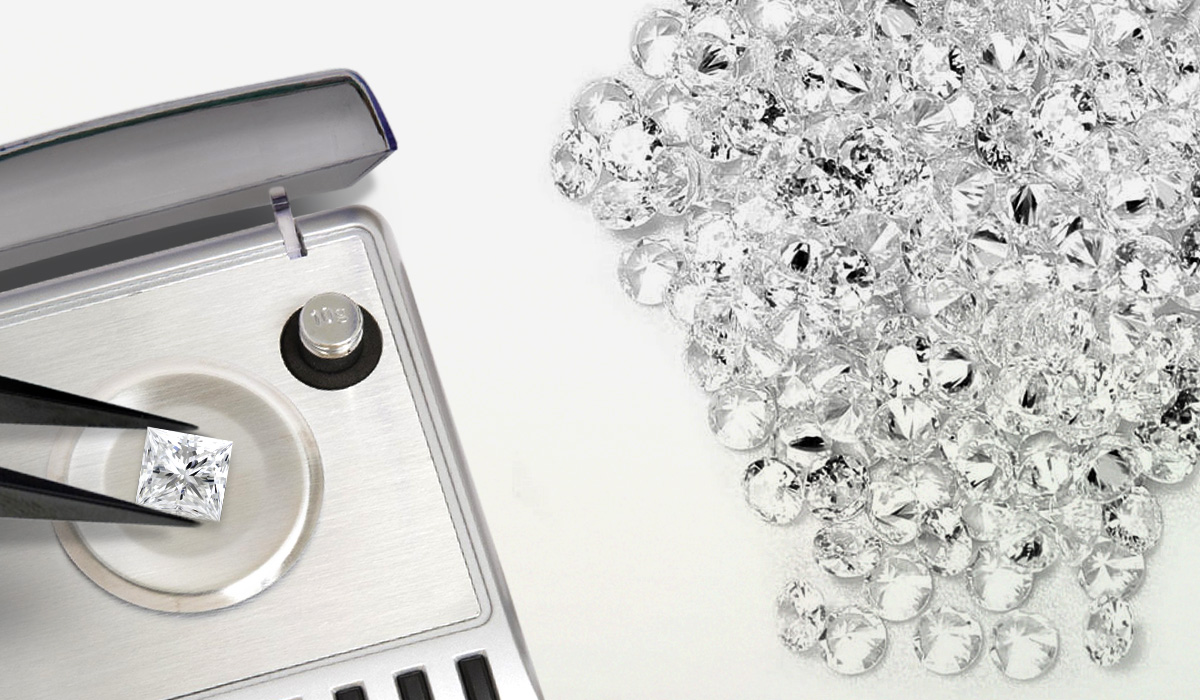
When it comes to purchasing diamonds, one of the most important factors to consider is the size of the stone. Whether you’re buying a diamond engagement ring, earrings, or a pendant, the size of the diamond plays a significant role in both the aesthetic appeal and the overall value of the piece. This is true for all diamonds, but when it comes to lab-grown diamonds, the relationship between diamond size and quality can be a bit different from traditional diamonds. In this article, we will explore why diamond size matters when choosing lab-grown diamonds, and how this affects your purchase decision.
Table of Contents
Understanding Diamond Size
Before diving into the significance of diamond size in lab-grown diamonds, it’s important to understand how diamond size is measured. Typically, diamonds are graded by their carat weight, which directly correlates to their size. A larger carat weight usually means a bigger diamond, although the actual physical size can vary slightly based on the shape and cut of the diamond. When considering lab-grown diamonds, it’s essential to keep in mind that these diamonds are created in a controlled environment and tend to be available in various sizes, just like their natural counterparts.
How Diamond Size Affects Appearance
One of the most noticeable aspects of diamond size is its visual impact. Larger diamonds tend to catch the light more easily and often have a more dazzling effect. This is especially important when selecting lab-grown diamonds because, like natural diamonds, their brilliance and sparkle are determined by the cut, clarity, and carat weight. If you prefer a diamond with a higher visual impact, a larger lab-grown diamond may be your ideal choice. However, the cut and setting of the diamond also play a crucial role in how the size is perceived, which means you may be able to achieve a similar visual effect with a smaller lab-grown diamond in the right setting.
Diamond Size and Its Impact on Price
When shopping for diamonds, many buyers are concerned with the cost. Typically, diamond size is one of the most significant factors that contribute to the price of the stone. Larger diamonds naturally cost more, but lab-grown diamonds offer a more affordable alternative to their natural counterparts. Since lab-grown diamonds are created in labs using advanced technology, they tend to be less expensive than mined diamonds, allowing you to purchase a larger stone for a more budget-friendly price. If diamond size matters to you but you’re working within a certain budget, lab-grown diamonds offer an excellent opportunity to get a larger stone at a fraction of the price of a mined diamond.
Diamond Size and Durability
While diamond size is a key factor in its aesthetic appeal, it is also worth considering how the size affects the durability of the stone. Larger diamonds may be more prone to chipping or damage, especially if they are not set properly or are exposed to rough handling. However, lab grown diamonds are generally just as durable as natural diamonds, thanks to the same structure and hardness. The durability of a lab-grown diamond will depend more on its cut and setting than its size. That said, if you’re purchasing a diamond for everyday wear, such as an engagement ring, you may want to consider a stone that is slightly smaller but still offers great brilliance and resilience.
The Role of Diamond Size in Engagement Rings
When selecting an engagement ring, many people place a lot of emphasis on the diamond size. It’s a symbol of commitment and often a statement of personal style. For those who choose lab-grown diamonds, the size of the stone can be an important factor in making a lasting impression. However, it’s crucial to remember that a larger lab-grown diamond doesn’t necessarily mean a higher-quality diamond. The cut, clarity, and overall craftsmanship of the ring play a major role in the final look. A smaller, well-cut lab-grown diamond can appear larger and more radiant than a bigger diamond with poor cut quality, making it essential to find the right balance between size and quality.
Finding the Perfect Balance Between Size and Quality
While diamond size is a key consideration, it’s essential to strike a balance between size, quality, and budget when purchasing lab-grown diamonds. Many buyers are drawn to larger diamonds, but it’s important to consider all the factors that influence the overall value and beauty of the stone. With lab-grown diamonds, you have the flexibility to choose a size that suits your preferences while also benefiting from a more affordable price point. A well-cut lab-grown diamond can offer the brilliance and elegance you’re seeking without the need for a larger, more expensive stone.
Conclusion: Diamond Size and Lab-Grown Diamonds
In conclusion, diamond size matters, but it is not the only factor to consider when purchasing lab-grown diamonds. While a larger diamond may be visually striking and more expensive, it is important to balance size with other key factors, such as cut, clarity, and budget. Fortunately, lab-grown diamonds offer a unique opportunity to purchase a larger stone at a more affordable price without sacrificing quality. By understanding the nuances of diamond size and making an informed choice, you can find the perfect lab-grown diamond that fits your style, budget, and preferences.
